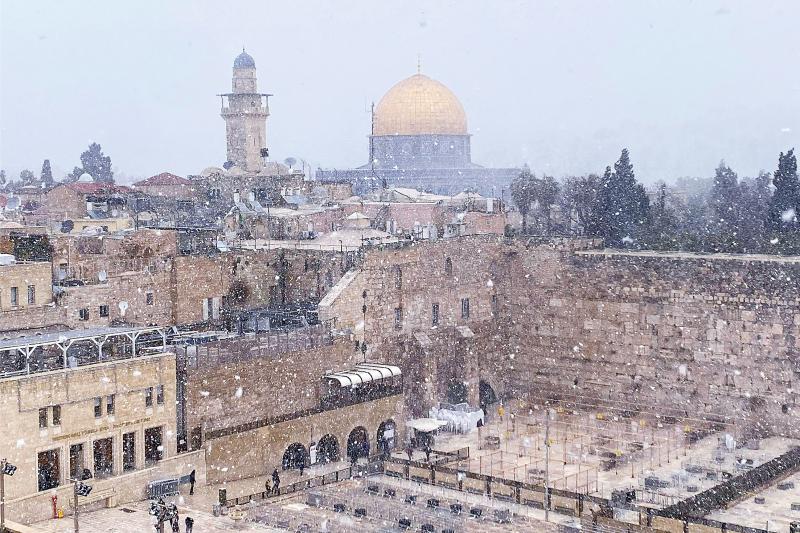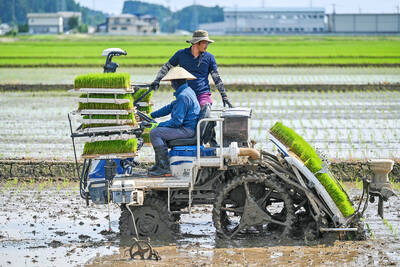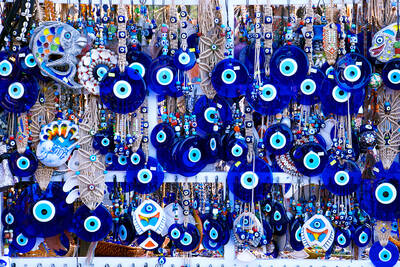For weeks now, Palestinian protesters and Israeli police have clashed on a daily basis in and around Jerusalem’s Old City, home to major religious sites sacred to Jews, Christians and Muslims and the emotional epicenter of the Middle East conflict.
Jerusalem has been the scene of violent confrontations between Jews and Arabs for 100 years and remains one of the most bitterly contested cities on earth. The latest clashes began a month ago with an Israeli move to block some Palestinian gatherings at the beginning of the Muslim holy month of Ramadan, already a time of heightened religious sensitivities. After those restrictions eased, tensions over a plan to evict dozens of Palestinians from an east Jerusalem neighborhood continued to fuel confrontations.
Israelis on May 10 marked Jerusalem Day, a national holiday celebrating the annexation. In past years, thousands of Israelis — mainly religious nationalists — have marched through the Old City, including the densely populated Muslim Quarter, in a display considered provocative by many Palestinians.

Photo: Reuters 照片:路透
CAPITAL OF TWO PEOPLES
Israel views Jerusalem as its “unified, eternal” capital. It had captured east Jerusalem, which includes the Old City, in the 1967 Mideast war, along with the West Bank and Gaza. Palestinians want those territories for their future state, with east Jerusalem serving as their eventual capital. But Israel annexed the eastern part of the city in a move not recognized internationally.
At the heart of Jerusalem’s Old City is the hill known to Jews across the world as Temple Mount — the holiest site in Judaism — and to Muslims internationally as the Noble Sanctuary. It was home to the Jewish temples of antiquity. Two Muslim holy places now stand there, the Dome of the Rock and Al-Aqsa Mosque, the third holiest place in Islam. Christians also revere the city as the place where they believe that Jesus preached, died and was resurrected.
The fate of east Jerusalem has been one of the thorniest issues in the peace process, which ground to a halt more than a decade ago.
(AP and Reuters)
數週以來,巴勒斯坦抗議民眾和以色列警察每天都在耶路撒冷舊城及其周圍發生衝突。耶路撒冷舊城是猶太人、基督徒和穆斯林神聖的主要宗教場所,以及中東衝突情感中心的所在地。
耶路撒冷成為猶太人與阿拉伯人之間暴力對峙的現場,已有一百年了,現仍為世界上衝突最劇的城市之一。最近的衝突始於一個月前,以色列在穆斯林聖月齋戒月之初禁止一些巴勒斯坦人的集會,而齋戒月已然是宗教敏感時期。這些限制放鬆之後,將數十名巴勒斯坦人逐出東耶路撒冷地區的計畫,讓對峙的緊張局勢持續升高。
以色列人在五月十日紀念「耶路撒冷日」,此國定假日旨在慶祝以色列併吞耶路撒冷。在過去幾年中,成千上萬的以色列人──主要為宗教民族主義者──上街遊行,穿過舊城區,包括人口稠密的穆斯林區,這種肆無忌憚被許多巴勒斯坦人認為是挑釁。
兩個民族的首都
以色列將耶路撒冷視為其「統一、永恆」的首都。一九六七年的中東戰爭,以色列佔領了包括舊城在內的東耶路撒冷,以及西岸與加薩走廊。巴勒斯坦人希望這些地方在他們建國後成為其領土,最終將定都於東耶路撒冷。但以色列卻將東耶路撒冷併吞,以色列此舉並未獲得國際認可。
耶路撒冷舊城的中心,是全球猶太人稱為「聖殿山」的山丘──猶太教最神聖之地點,而各國穆斯林則稱之為「神聖禁地」。此為古代猶太聖殿之所在地,亦為伊斯蘭教之第三聖地,現有兩處穆斯林聖地──圓頂清真寺,以及阿克薩清真寺。基督徒也崇敬此城,因為他們相信此為耶穌講道、受死及復活之處。
東耶路撒冷的命運一直是和平進程中最棘手的問題之一,此進程在十多年前已停滯不前。
(台北時報林俐凱編譯)

Rice is essential to Japanese culture, tradition and politics. People take pride in the oval-shaped sticky Japonica grain, which is still a staple even though total consumption has fallen over the decades. But since last summer, prices have soared as supplies have fallen short of demand. The government has long paid farmers to cut back on rice acreage, and change to other crops to keep rice prices relatively high. To cope with shortfalls this year, the government has released rice reserves. But the grain has been slow to reach supermarket shelves. Anger over that was part of the reason the Agriculture Minister

Step into any corner of Turkiye, and you’ll likely encounter the iconic “Evil Eye,” known as “nazar boncu?u” in Turkish. This striking blue glass ornament is shaped like an eye with concentric circles of dark blue, white, and light blue. While its name in English suggests something threatening, it’s actually a charm designed to ward off misfortune. The origins of the nazar boncu?u can be traced back to ancient Mediterranean and Middle Eastern traditions. The word nazar comes from Arabic, meaning “gaze,” while boncu?u translates to “bead” in Turkish. Central to the nazar boncu?u’s mythology is the idea that

A: Wow, Les Miserables Staged Concert Spectacular is visiting Taiwan for the first time. B: Isn’t Les Miserables often praised as one of the world’s four greatest musicals? A: Yup. Its concert is touring Taipei from tonight to July 6, and Kaohsiung between July 10 and 27. B: The English version of the French musical, based on writer Victor Hugo’s masterpiece, has been a huge success throughout the four decades since its debut in 1985. A: The musical has never toured Taiwan, but going to the concert sounds like fun, too. A: 哇,音樂劇《悲慘世界》紀念版音樂會首度來台巡演! B: 《悲慘世界》……它不是常被譽為全球四大名劇之一嗎? A: 對啊音樂會將從今晚到7月6日在台北演出,從7月10日到27日在高雄演出。 B: 這部法文音樂劇的英文版,改編自維克多雨果的同名小說,自1985年首演以來,在過去40年造成轟動。 A:

1. 他體力很弱,不能幹重活。 ˇ As he was weak in health, he could not do heavy work. χ Weak as he was in health, he could not do heavy work. 註:as 作連接詞,表示“因為”時,絕不能倒置,習慣上以 as 引導的 詞序倒置的從屬句是用來強調兩種意義相反的情況。例如: Strong as he was, he could not lift that rock. (儘管他的身體壯,他還是舉不起那塊石頭。) Weak as he was, he lifted that rock easily. (儘管他身體很弱,他還是能不費力地舉起那塊石頭。) 2. 在開發中國家,許多婦女就這樣悲慘地喪命。 ˇ In developing countries there are many women who lost their lives in similar tragic ways. ˇ There are many women in developing countries who lost their lives in similarly tragic ways. χ There are many women who lost their lives similarly tragic ways in developing countries. 註:錯句中把 in developing countries 放在限定性形容詞子句之末,易使人誤解為修飾 lost their lives,因此應放在句首或緊接修飾的對象。 3. 在極權國家,統治者什麼都有,老百姓什麼都沒有。 有。 ˇ In